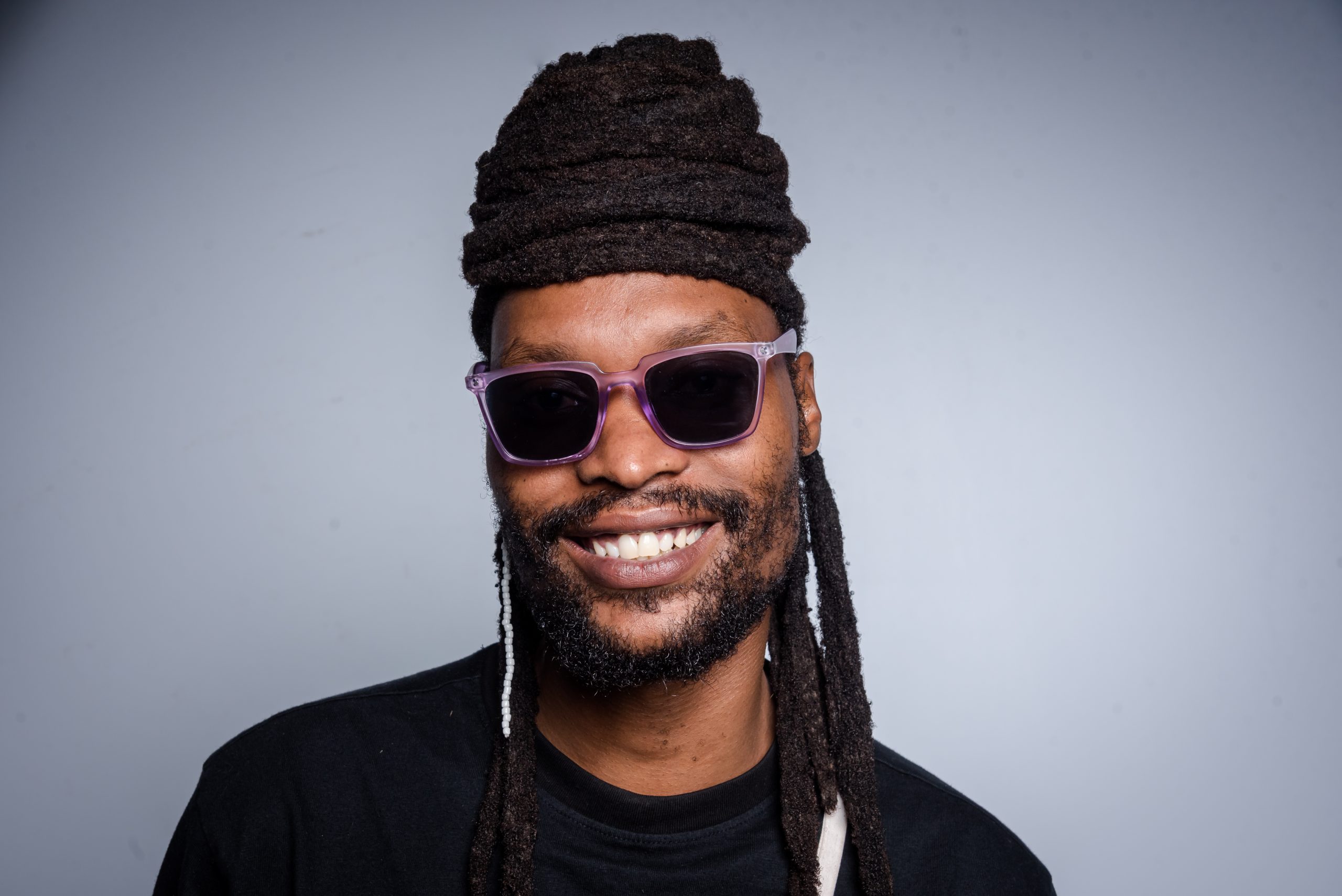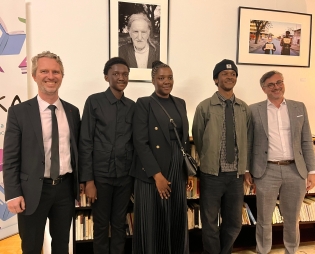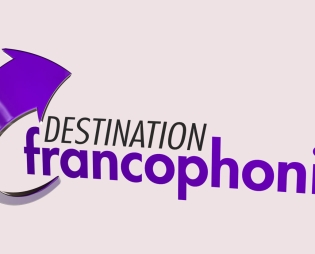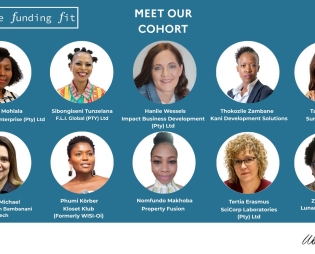Visual artist and member of the artist collective, Occupying The Gallery, Lusanda Ndita, was announced as the winner of the 2024 Absa L’Atelier Gerard Sekoto Award on 16 November 2024. We caught up with him to find out more about his background, his art, and his hopes for the future.
- Could you share a bit about your journey as an artist? What inspired you to pursue this path?
I never thought I was going to be an artist. Even at school, I never took drama. So I think for me, the thing that most occupied my mind was becoming a professional footballer. I played football since I learned how to run, so I occupied myself with it until I finished my matric. My mother, who is a teacher, wanted me to go and study further. I came across, an interview and writings of the late Dr. Santu Mofokeng. At that time, I didn’t know anything about art or photography. I decided to study photography at the Market Photo Workshop, where I studied the Advanced Programme in Photography. His thinking was around how he wants to write his own biography. So that kind of stayed with me forever, this idea or this notion of writing one’s biography.
- How has your personal background or upbringing influenced your artistic style and themes?
My work is interested in understanding my family’s lineage and rewriting my biography. My work is mostly influenced by the notion of growing up with a single parent, which was my mother. I tend to the domestic archive as a way of looking at men, looking at the “absence of men”, looking at manhood in my family history. Through that, I came across my grandfather’s apartheid-issued dompass and that triggered me to research more about the dompass and the existence of it. I am also interested in photography as studio-based practice were I am engaging with the photograph physical, graphical and spiritual, so I use the Chinese paper hand cutout technique, to speak to the notion and duality between absence of presence. The silhouettes of figures become the fragmented windows that are flooded in red fabric. The red is a metaphor for the Xhosa process of becoming and transitioning from the state of boyhood to manhood. As a rite of passage, a boy goes to entabani (mountain) and sear with imbola (red soil) for a period of time before ascending to manhood. As much as I say I grew up with a single parent, I had male influences in my family and in my life such as my uncles, my soccer coach, my friends fathers.
- What are the primary themes or messages in your artwork, and what drives you to explore them?
My practice attempts to explore the deep complexities of the ‘absence of men’ as a historical, social, and political phenomenon. With a focus on colonialism and apartheid lasting impact, which has influenced the structure of families, particularly in post-colonial South Africa, and how these issues can be expressed through art.
- Winning the Absa L’Atelier Gerard Sekoto Award is a significant milestone. How did you feel when you found out you had won?
When they called out my name, I couldn’t believe it. I still don’t believe it. When I called my mother she was more excited than I was. She was screaming and dancing and making all these noises and jumping around the house. My turn is still coming. I think maybe after a couple of weeks it will sink in.
- The award offers a residency at the Cité Internationale des Arts in Paris. What are you most looking forward to during your time there?
The first thing I want do is visit the graveyard of the late, great master, Gerard Sekoto. Just to give my gratitude. I’m going to spend most of my time at the Louvre Museum to engage with the old masters such as Leonardo da Vinci, Monet and Picasso. I can’t wait to get a few French words under my belt and to learn about the French culture, and be immersed in the cultural world of France.
- Gerard Sekoto is an iconic figure in South African art, particularly in the context of exile and modernism. What does it mean to you to be associated with his legacy?
I think it gives me a great responsibility. I am reminded of Master Sekoto’s painting, Song of the Pick (1947), it resonates with me artistically, and it’s content connects with themes and issues that persist today, which I try to reflect and question in my own work. It’s a great honour and important task to always go back to these great artworks to understand the meanings behind them, and bring back these issues to contemporary contexts and see how far, or not, we have come.
- Where do you see your art taking you in the next few years? Do you have any specific projects or goals you’re excited about?
I look forward to being informed or immersed in the cultural landscape in France, and see how this experience influences my thinking process of making work or how my thinking will shift. When I come back from Paris, I’m excited to have my first solo show. A personal goal is, I want to represent my country in the Venice Biennale. And share or put my ancestral story in the international or global dialogue.
- What advice would you give to emerging South African artists hoping to make their mark?
It’s not a sprint, it’s a marathon. To be patient and having perseverance is a good skill to have. If you’re not true to yourself, you don’t know where you’re going and then it’s easy to get lost in the process of the marathon. I think it’s important if you’re true to yourself then you’re going to learn yourself every day. It’s important to take life as a process. You’re always going to change. You’re always going to try another voice, and then in doing that, you’re going to find yourself or remember yourself again, because I believe we have been born again to come back in this world. By opening yourself up and relearning yourself, it helps you to come back to yourself again.






Problem displaying Facebook posts.
Click to show error